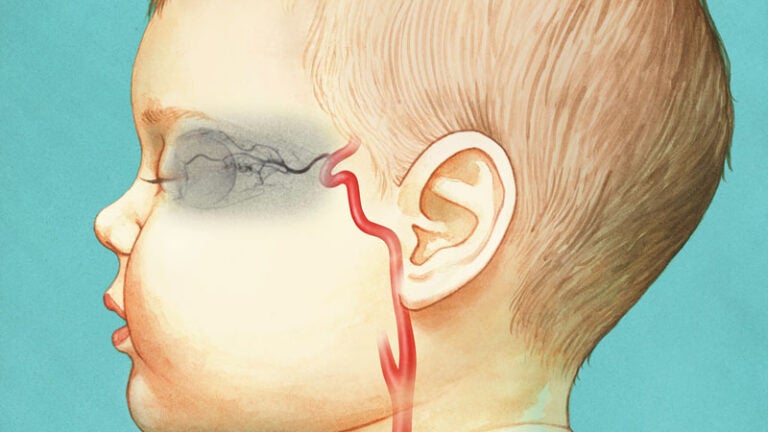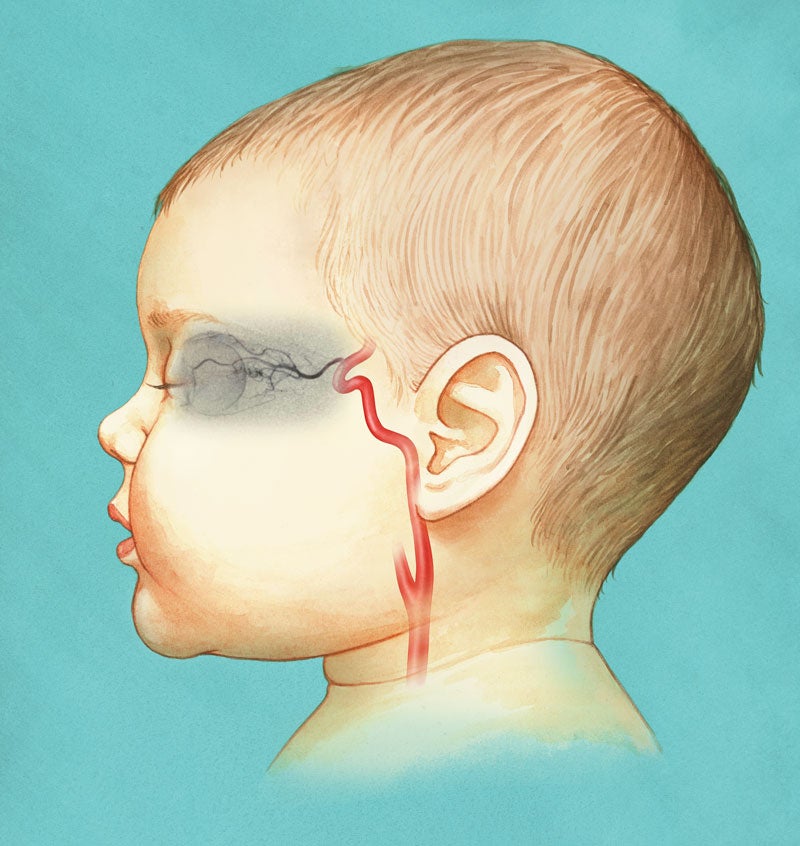
(Illustration/ Amy Dixon)
Children’s Eye Cancer Treatment Takes Big Step Forward
Innovative research for retinoblastoma may help children preserve their vision — and avoid risky surgery.
It’s bad enough to hear that your child has cancer. But parents of children with the eye cancer retinoblastoma usually have to watch their young ones endure the effects of chemotherapy and the fear of vision loss.
At Children’s Hospital Los Angeles (CHLA) and the USC Roski Eye Institute, doctors now have a gentler way to treat retinoblastoma. They thread a catheter through a child’s arteries up to the head to deliver chemotherapy right to the back of the eye. The technique, called intra-arterial chemotherapy, limits a child’s exposure to toxic drugs. Not only can the doctors hit the tumor with chemo, but they can also stream drugs into the fluid inside the eye to kill cancer cells that are spreading.
CHLA ocular oncologist Jesse Berry, assistant professor of clinical ophthalmology at the Keck School of Medicine of USC, is advancing the children’s eye cancer treatment and helping to save kids’ lives — and their eyesight.
While performing the procedures, though, Berry made a discovery that could be even more influential for future treatment.

To administer the chemotherapy, doctors lower the pressure inside the eye by pulling some fluid, called aqueous humor, from within it. Doctors usually discard that fluid, but Berry wondered if it might shed more light on retinoblastoma.
She had heard about so-called “liquid biopsy” techniques under study by USC biophysicist Peter Kuhn and colleagues, so she turned to these experts at the USC Michelson Center for Convergent Bioscience for help.
When they analyzed the liquid, they found DNA from the tumors — genetic information that doctors had never been able to get from an intact eye.
Ocular oncologists would like to use genetic information from patients’ retinoblastoma tumor tissue to create a more personalized course of treatment for each patient. Today, to get DNA samples, they’d have to remove tissue from the tumor in the back of the eye. It’s perilous business, because it raises the risk of spreading the cancer outside the eye, so physicians usually avoid it.
But if doctors can get valuable information from the aqueous humor without extracting the eye, it could help them improve treatment.
James Hicks, professor of biological sciences at the USC Michelson Center, says that the chromosomal changes in the DNA parallel the chromosomal changes found in the retinoblastoma tumor. “These findings provide proof of principle that the aqueous humor can be used for a surrogate liquid tumor biopsy,” says Hicks, who is on the faculty of the USC Dornsife College of Letters, Arts and Sciences and Keck School of Medicine.
For kids, parents and physicians, the discovery could be a gamechanger.
“This research has the potential to completely transform how we treat children with retinoblastoma,” says Jonathan W. Kim, director of the retinoblastoma program at CHLA and the ocular oncology service at the USC Roski Eye Institute. “This is one of the most significant findings in retinoblastoma research in the past 20 years.”



